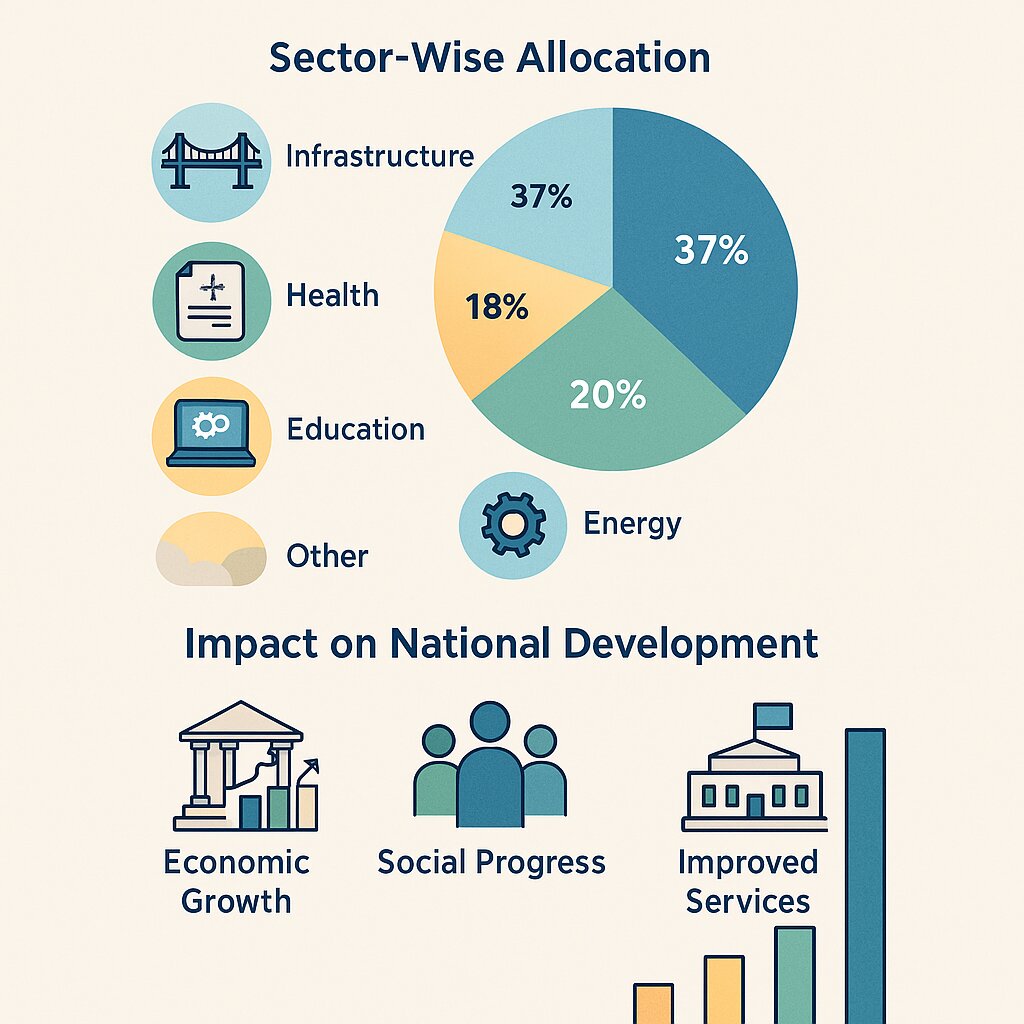
The Public Sector Development Programme (PSDP) serves as Pakistan’s cornerstone for infrastructure modernization and socio-economic progress, channeling billions annually into projects aimed at transforming energy grids, highways, healthcare, and climate resilience. With an allocation of Rs. 950 billion for FY2023–24, the PSDP reflects the government’s ambition to address infrastructure deficits while aligning with global goals like the SDGs. However, its effectiveness hinges on strategic fund distribution, timely execution, and adaptability to emerging challenges such as climate change and fiscal constraints. Here’s an analysis of how PSDP allocations are prioritized, their developmental impact, and the hurdles that persist.
Allocation Priorities: Balancing Infrastructure and Social Needs
PSDP funds are distributed across sectors through a consultative process involving federal ministries, provincial governments, and the National Economic Council (NEC). Historically, infrastructure—roads, ports, and energy—dominates allocations due to its multiplier effect on growth. For FY2023–24, Rs. 450 billion (47% of the total) was earmarked for infrastructure, including CPEC-linked projects like the Sukkur-Hyderabad Motorway. Social sectors (education, health) received Rs. 200 billion (21%), while climate resilience saw an unprecedented Rs. 80 billion (8%) following catastrophic 2022 floods.
FY2023–24 PSDP Sectoral Allocation Breakdown
| Sector | Allocation (Rs. Billion) | Share of Total |
|---|---|---|
| Infrastructure | 450 | 47% |
| Social Development | 200 | 21% |
| Energy | 150 | 16% |
| Climate Resilience | 80 | 8% |
| Others | 70 | 7% |
Measuring Impact: From Roads to Resilience
PSDP-funded projects have catalyzed tangible progress. The Diamer-Bhasha Dam, allocated Rs. 85 billion in 2023–24, aims to add 4,500 MW of clean energy and enhance water storage capacity by 35%. Similarly, the Sindh Basic Education Program, financed through PSDP, has constructed 106 schools in underserved regions since 2021, boosting enrollment by 18%. Climate resilience allocations have enabled flood rehabilitation, rebuilding 65,000 homes in Balochistan and Sindh.
Economically, PSDP projects contribute 1–1.5% to annual GDP growth and generate over 500,000 jobs yearly. The Lahore-Sialkot Motorway, completed in 2022, reduced travel time by 40% and increased inter-city trade by Rs. 30 billion annually. However, outcomes vary by sector—energy projects often face delays, while social initiatives struggle with long-term sustainability.
Challenges in Execution: Ambition vs. Reality
Despite its vision, the PSDP grapples with systemic bottlenecks:
- Underutilization of Funds: Only 70% of the FY2022–23 development budget was spent, attributed to bureaucratic delays and weak project planning.
- Political Interference: Shifting priorities with changing governments disrupt continuity; projects like the Karachi Circular Railway have faced decades of stagnation.
- Fiscal Constraints: Rising debt servicing (now 50% of revenue) squeezes development spending, forcing reliance on external financing (e.g., World Bank, ADB).
The Road Ahead: Efficiency and Equity
To maximize impact, policymakers advocate for:
- Enhanced Monitoring: Real-time tracking via digital platforms to curb delays.
- Provincial Collaboration: Strengthening NEC-led coordination to avoid duplication in sectors like health.
- Climate-Centric Reforms: Mainstreaming resilience in all projects, not just designated allocations.
The PSDP remains vital for Pakistan’s development, yet its success depends on bridging the gap between allocation and execution. By addressing governance flaws and fostering transparency, the program can better translate budgets into transformative outcomes.
This article was published on PublicFinance.pk.
